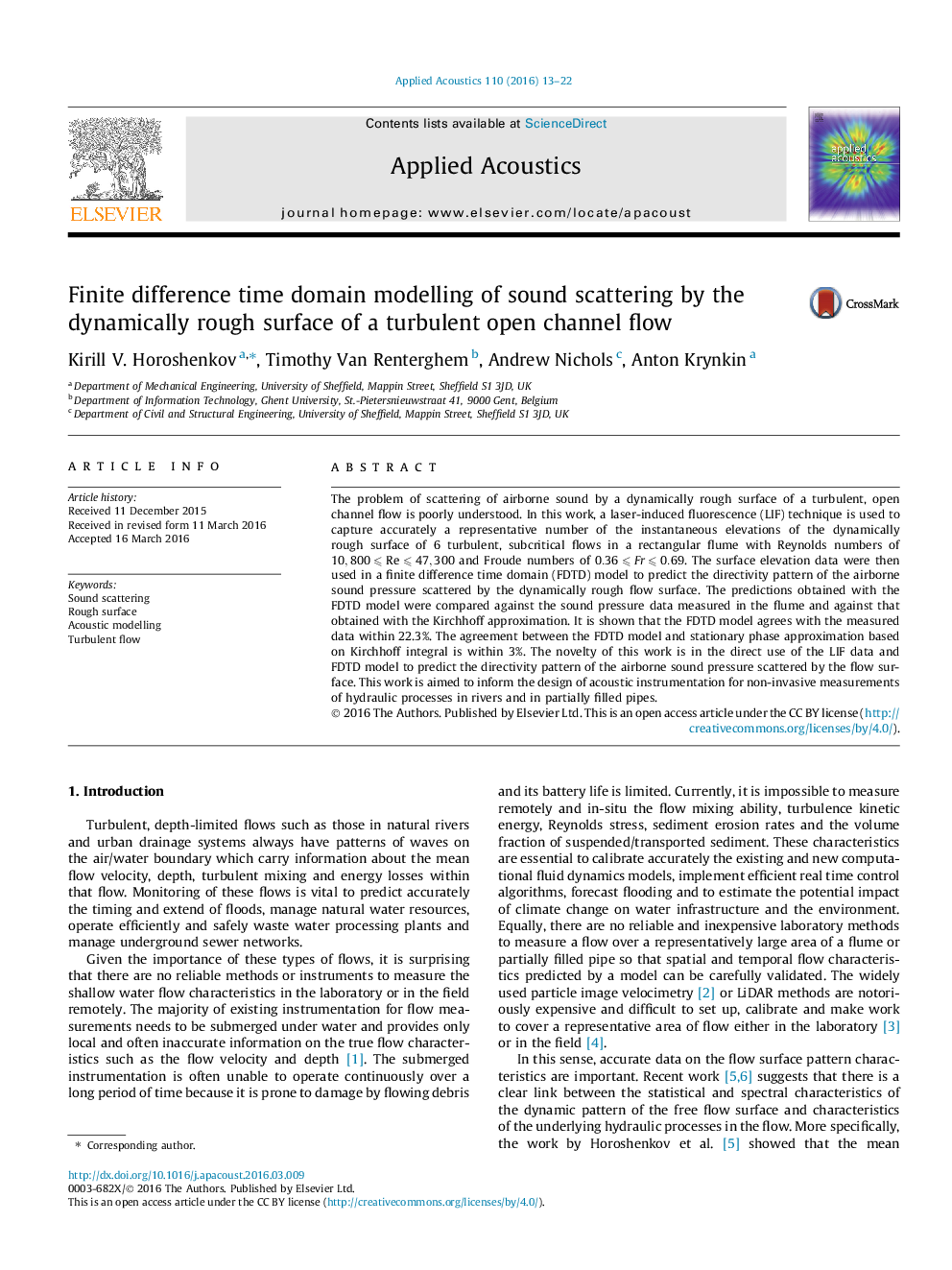| Article ID | Journal | Published Year | Pages | File Type |
|---|---|---|---|---|
| 7152480 | Applied Acoustics | 2016 | 10 Pages |
Abstract
The problem of scattering of airborne sound by a dynamically rough surface of a turbulent, open channel flow is poorly understood. In this work, a laser-induced fluorescence (LIF) technique is used to capture accurately a representative number of the instantaneous elevations of the dynamically rough surface of 6 turbulent, subcritical flows in a rectangular flume with Reynolds numbers of 10,800⩽Re⩽47,300 and Froude numbers of 0.36⩽Fr⩽0.69. The surface elevation data were then used in a finite difference time domain (FDTD) model to predict the directivity pattern of the airborne sound pressure scattered by the dynamically rough flow surface. The predictions obtained with the FDTD model were compared against the sound pressure data measured in the flume and against that obtained with the Kirchhoff approximation. It is shown that the FDTD model agrees with the measured data within 22.3%. The agreement between the FDTD model and stationary phase approximation based on Kirchhoff integral is within 3%. The novelty of this work is in the direct use of the LIF data and FDTD model to predict the directivity pattern of the airborne sound pressure scattered by the flow surface. This work is aimed to inform the design of acoustic instrumentation for non-invasive measurements of hydraulic processes in rivers and in partially filled pipes.
Related Topics
Physical Sciences and Engineering
Engineering
Mechanical Engineering
Authors
Kirill V. Horoshenkov, Timothy Van Renterghem, Andrew Nichols, Anton Krynkin,
